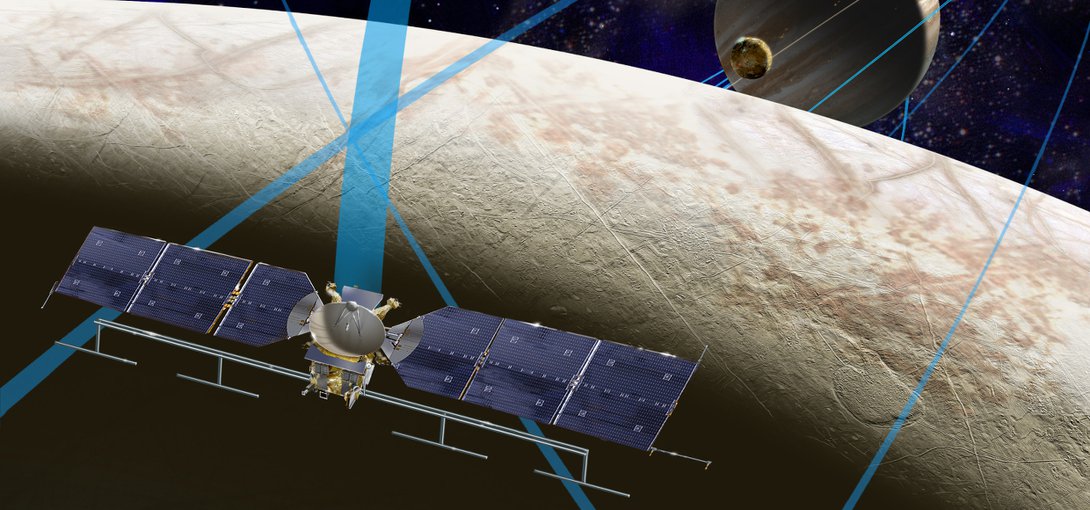
Jan. 13, 2020
Research Highlight
Tidal Heating on Icy Moons

Artist's illustration of NASA’s Europa Clipper spacecraft, which will perform multiple flybys of the ocean-harboring Jupiter moon.Image credit: NASA/JPL-Caltech.
A recent study supported in part by the NASA Astrobiology Program discusses the dynamics of tidal heating on worlds with thin subsurface oceans that are covered by ice shells of varying thickness. Under the right conditions, tidal heating is thought to be a long-term source of energy on some icy worlds that can help to create and maintain liquid subsurface oceans. Understanding how tidal heating works can help astrobiologists identify worlds that support subsurface oceans and determine whether or not these oceans might be habitable for life as we know it.
The study includes a discussion of how an overlying shell on icy moons might dampen ocean tides and cause a reduction in tidal heating. The findings indicate that this effect would be greater on Enceladus than on Europa. This is because Enceladus is expected to have a more rigid ice shell due to its smaller size. The findings also present a number of insights into how tidal heating might operate on icy moons, with implications on the potential thickness of icy shells and depth of subsurface oceans on moons like Enceladus and Europa. The results could inform future missions, such as Europa Clipper.
The study, “Ocean tidal heating in icy satellites with solid shells” was published in Icarus. The work was supported through NASA’s Habitable Worlds Program. The NASA Astrobiology Program provides resources for Habitable Worlds and other Research and Analysis programs within the NASA Science Mission Directorate (SMD) that solicit proposals relevant to astrobiology research.